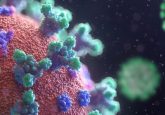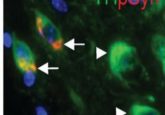Understanding the disease trajectory of Long COVID

UCLA researchers reveal that 30% of people treated for COVID-19 developed Long COVID and link factors correlated to the likelihood of developing the syndrome.
Researchers from the University of California, Los Angeles (UCLA; CA, USA) set out to discover the proportion of people treated for COVID-19 who developed Post-Acute Sequelae of COVID-19 (PASC), also known as ‘Long COVID’. Of the 309 people with Long COVID studied, fatigue and shortness of breath were the most persistent symptoms (31% and 15%, respectively) in hospitalized patients and loss of sense of smell (16%) in outpatients. These results could help to improve our management and understanding of the condition.
Throughout the pandemic the incidence of and the risk factors associated with Long COVID have remained unclear; therefore, the team set out to determine the demographics and clinical characteristics associated with the condition to find the most effective treatments.
The study, led by Sun Yoo, investigated 1038 people enrolled in the UCLA COVID Ambulatory Program between April 2020 and February 2021. Of this cohort, 309 reported persistent symptoms on questionnaires 60 or 90 days after infection or hospitalization and were noted to have developed Long COVID.
People with a history of hospitalization, diabetes, and higher body mass index were found to be most likely to develop Long COVID. However, people insured by Medicaid, as opposed to commercial health insurance, or who had undergone an organ transplant were less likely to develop Long COVID.
 Can SARS-CoV-2 variants cause different Long COVID symptoms?
Can SARS-CoV-2 variants cause different Long COVID symptoms?
An observational study of Long COVID patients in Italy revealed that different neurological and emotional symptoms were reported depending on the strain of SARS-CoV-2 infection.
“This study illustrates the need to follow diverse patient populations longitudinally to understand the Long COVID disease trajectory and evaluate how individual factors such as pre-existing co-morbidities, sociodemographic factors, vaccination status and virus variant type affect type and persistence of Long COVID symptoms,” Yoo explained.
The study also found that ethnicity, older age, and socioeconomic status were not associated with the syndrome despite those characteristics being correlated with severe illness and greater risk of death from COVID-19.
“Studying outcomes in a single health system can minimize variation in the quality of medical care. Our study also raises questions such as: why were patients with commercial insurance twice as likely to develop Long COVID than patients insured through Medicaid? Because persistent symptoms can be subjective in nature, we need better tools to accurately diagnose Long COVID and to differentiate it from exacerbations of other emerging or chronic conditions. Finally, we need to ensure equitable access to outpatient Long COVID care,” Yoo elucidated.
As Yoo mentioned, the subjective nature of patient ratings of their symptoms is a potential weakness of the study. Additionally, the number of symptoms the team evaluated and restricted information about patients’ pre-existing conditions constitute limitations.
Submit Your Research to the F1000Research Disease Outbreaks Gateway
Contribute to the global understanding of disease outbreaks with the F1000Research Disease Outbreaks Gateway. With trusted publishing, open access, and transparent peer review, your research will uphold the highest standards of integrity while advancing knowledge in areas like COVID-19 and other public health challenges.
Join a platform that values rigor, transparency, and author control. Submit your research today at F1000Research Disease Outbreaks Gateway.





